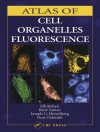Soils have important roles to play in criminal and environmental forensic science. Since the initial concept of using soil in forensic investigations was mooted by Conan Doyle in his Sherlock Holmes stories prior to real-world applications, this branch of forensic science has become increasingly sophisticated and broad. New techniques in chemical, physical, biological, ecological and spatial analysis, coupled with informatics, are being applied to reducing areas of search by investigators, site identification, site comparison and measurement for the eventual use as evidence in court. Soils can provide intelligence, in assisting the determination of the provenance of samples from artifacts, victims or suspects, enabling their linkage to locations or other evidence. They also modulate change in surface or buried cadavers and hence affect the ability to estimate post-mortem or post-burial intervals, and locate clandestine graves. This interdisciplinary volume explores the conceptual and practical interplay of soil and geoforensics across the scientific, investigative and legal fields. Supported by reviews, case-studies from across the world, and reports of original research, it demonstrates the increasing convergence of a wide range of knowledge. It covers conceptual issues, evidence (from recovery to use in court), geoforensics, taphonomy, as well as leading-edge technologies. The application of the resultant soil forensics toolbox is leading to significant advances in improving crime detection, and environmental and national security.
Innehållsförteckning
Concepts.- “Soils Ain’t Soils”: Context and Issues Facing Soil Scientists in a Forensic World.- Expert Scientific Evidence in Court: The Legal Considerations.- Some Thoughts on the Role of Probabilistic Reasoning in the Evaluation of Evidence.- Microbial Community Profiling for the Characterisation of Soil Evidence: Forensic Considerations.- The Current Status of Forensic Soil Examination in the Russian Federation.- Characterisation and Discrimination of Urban Soils: Preliminary Results from the Soil Forensics University Network.- Environmental Considerations for Common Burial Site Selection After Pandemic Events.- Evidence.- A Systematic Approach to Soil Forensics: Criminal Case Studies Involving Transference from Crime Scene to Forensic Evidence.- Forensic Ecology, Botany, and Palynology: Some Aspects of Their Role in Criminal Investigation.- Sediment and Soil Environmental Forensics: What Do We Know?.- Petrography and Geochemical Analysis for the Forensic Assessment of Concrete Damage.- Tracing Soil and Groundwater Pollution with Electromagnetic Profiling and Geo-Electrical Investigations.- Locating Concealed Homicide Victims: Developing the Role of Geoforensics.- Geological Trace Evidence: Forensic and Legal Perspectives.- New Observations on the Interactions Between Evidence and the Upper Horizons of the Soil.- The Forensic Analysis of Sediments Recovered from Footwear.- Using Soil and Groundwater Data to Understand Resistivity Surveys over a Simulated Clandestine Grave.- Spatial Thinking in Search Methodology: A Case Study of the ‘No Body Murder Enquiry’, West of Ireland.- Localisation of a Mass Grave from the Nazi Era: A Case Study.- Taphonomy.- Research in Forensic Taphonomy: A Soil-Based Perspective.- Can Temperature Affect the Release of Ninhydrin-Reactive Nitrogen in Gravesoil Following the Burial of a Mammalian (Rattus rattus) Cadaver?.- Taphonomic Changes to the Buried Body in Arid Environments: An Experimental Case Study in Peru.- Decomposition Studies Using Animal Models in Contrasting Environments: Evidence from Temporal Changes in Soil Chemistry and Microbial Activity.- Microbial Community Analysis of Human Decomposition on Soil.- Technology.- Analysis of Soils in a Forensic Context:Comparison of Some Current and Future Options.- Automated SEM-EDS (QEMSCAN®) Mineral Analysis in Forensic Soil Investigations: Testing Instrumental Reproducibility.- Rapid, Reliable and Reviewable Mineral Identification with Infrared Microprobe Analysis.- Preservation and Analysis of Three-Dimensional Footwear Evidence in Soils: The Application of Optical Laser Scanning.- Discrimination of Domestic Garden Soils Using Plant Wax Compounds as Markers.- Environmental Forensic Investigations: The Potential Use of a Novel Heavy Metal Sensor and Novel Taggants.- Separation and Concentration of Trace Evidence from Soils Using a Hydropneumatic Elutriation Trace Evidence Concentrator (TEC).- Postscript.- Soils in Forensic Science: Underground Meets Underworld.












